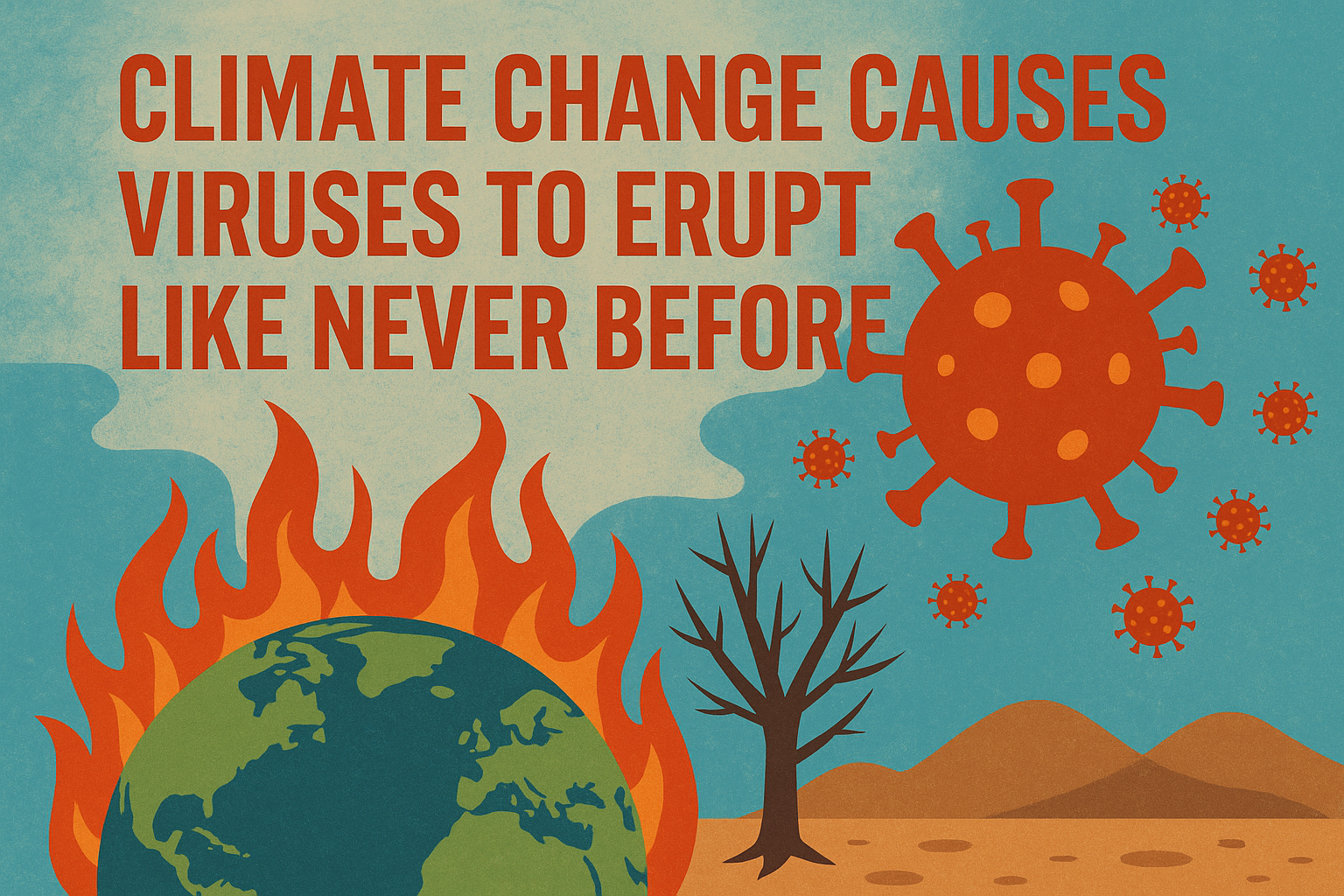
As the world grapples with rising temperatures and erratic climate patterns, scientists are warning of a chilling side effect: the explosion of deadly viruses. Climate change is no longer just an environmental crisis—it's a looming public health emergency.
According to the World Health Organization (WHO), viral outbreaks like COVID-19, Nipah, and Chandipura are becoming increasingly common. This warning, ahead of major global gatherings like the LA Olympics 2028, underscores the urgent need to treat climate change not only as an environmental concern but also as a biological threat.
Despite advances in healthcare infrastructure, the world continues to witness unprecedented virus eruptions. Science writer Ed Yong has coined the term “Pandemicene”, signifying a new era where pandemics become the norm, driven by the environmental fallout of the Anthropocene age.
How Climate Change Fuels Virus Emergence
From heatwaves and floods to wildfires and droughts, extreme weather events are displacing both humans and animals. As deforestation and urban expansion shrink natural habitats, wild species are forced into closer contact with human populations. This intersection becomes a breeding ground for zoonotic spillover—when viruses jump from animals to humans.
Rising global temperatures, drying freshwater sources, and erratic rainfall patterns also push wild animals to migrate, often into human-dominated areas. The increasing overlap between human ecosystems and wildlife accelerates the cross-species transmission of deadly viruses.
The Iceberg Study: A Dire Forecast
A landmark study by Colin Carlson, a biologist and lead author of a paper published in Nature, highlights the imminent danger. Carlson’s team developed a phylogeographical model predicting that at least 10,000 viruses capable of infecting humans currently exist in wildlife. Due to habitat loss and climate shifts, these viruses are expected to cross into human populations at an alarming rate.
Dubbed “The Iceberg Study”, the research warns of more than 300,000 potential interactions between zoonotic viruses and humans in the near future. This surge could multiply cross-species transmissions by over 4,000 times, compared to current rates. Ebola, once confined to West Africa, has now spread across the continent—serving as a stark preview of what’s to come.
Why the Paris Climate Goals Matter More Than Ever
The study stresses the need for the Paris Agreement’s goal of limiting global warming to below 2°C by 2100. Failure to do so could escalate not just environmental disasters but also the viral threats stalking our modern world.
While climate change conferences often focus on carbon emissions and rising sea levels, it is equally crucial to discuss its role in spawning future pandemics. If we ignore these findings, we risk unleashing unstoppable waves of infections, overwhelming healthcare systems, and rewriting the rules of survival.

